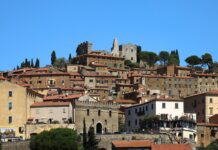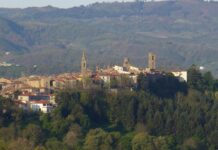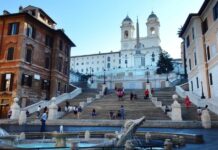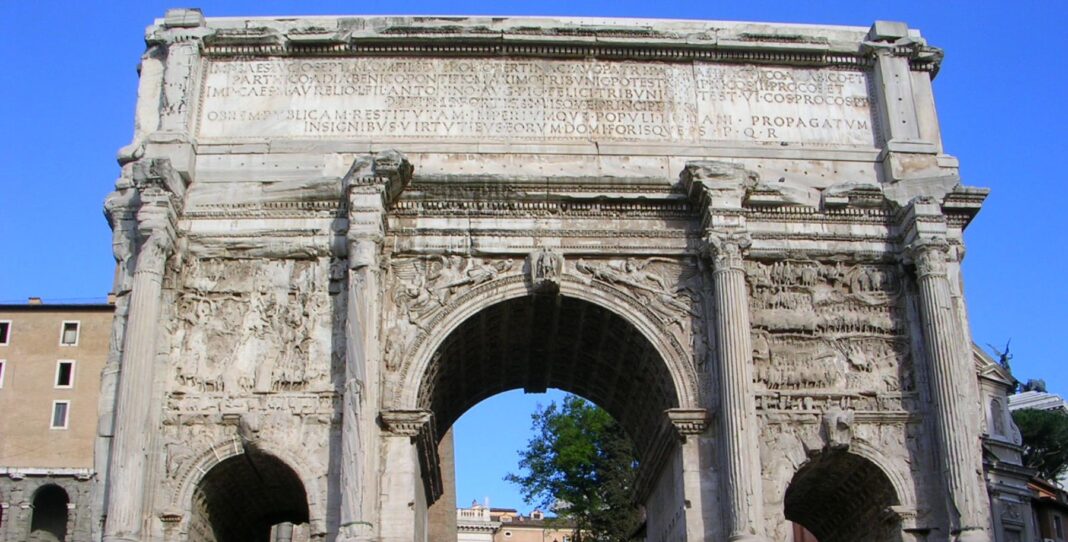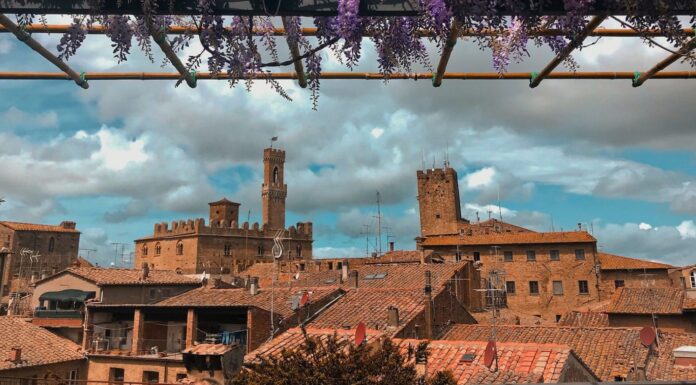In the northwestern corner of the Roman Forum archeological site, you will find the Arch of Septimius Severus. This powerful propaganda symbol of Rome’s power and conquest is definitely worth a visit during your trip to Rome. It is rich in history, symbolism, scandal, and artistic skill.
Commissioned by – you guessed it – a man named Septimius Severus, who happened to be the Roman Emperor, The Arch of Septimius Severus celebrates his victory, alongside his sons, over the Parthians. The depictions of their power can still be seen on the arch today… even if one of his sons’ legacies was removed from the stone after the other murdered him. But, we’ll get to that in a moment.
Let’s investigate why Rome’s Arch of Septimius Severus is so important, and some of the history and craftsmanship behind its creation. I’ll also share some tips to help you plan a great visit to this site!
History of the Arch of Septimius Severus in Rome
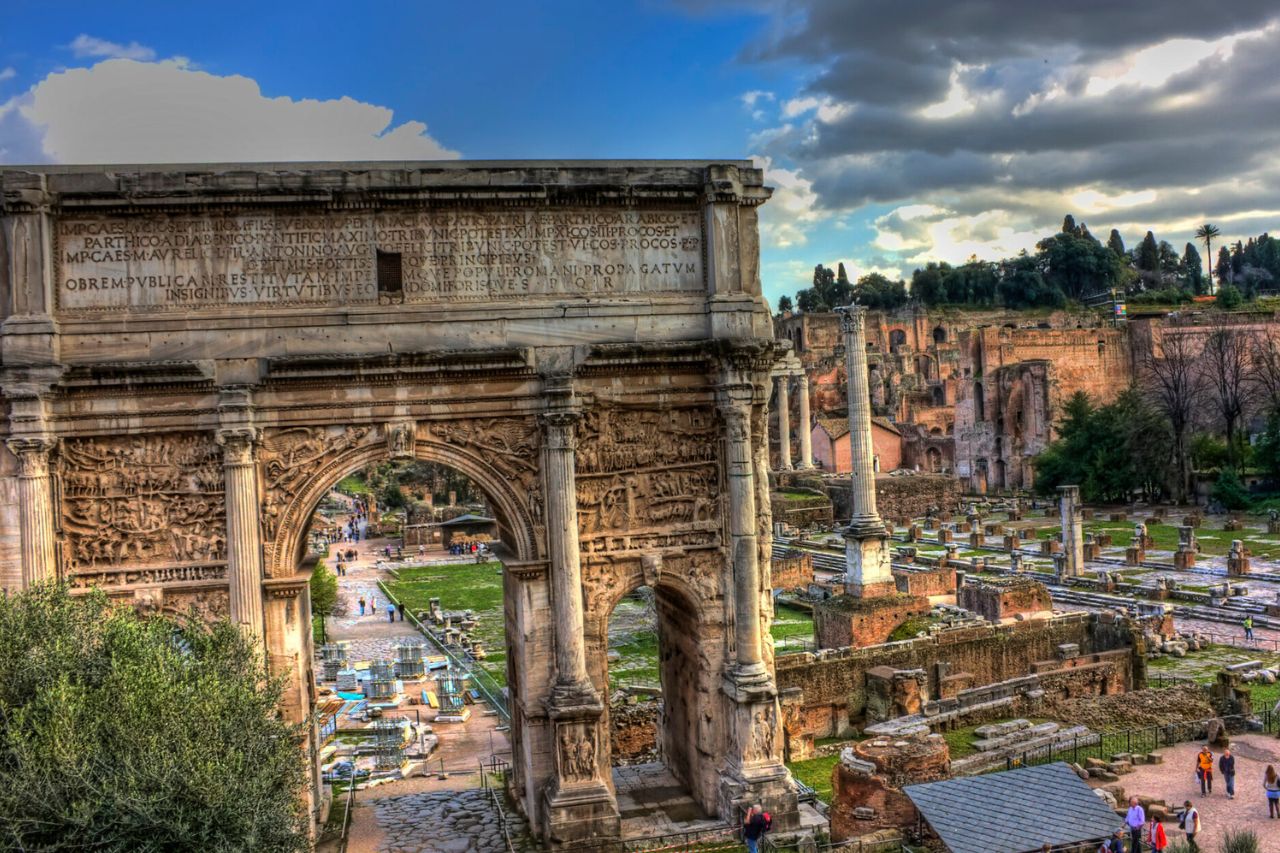
The Arch of Septimius Severus was created in the Roman Forum to commemorate the victory of Emperor Septimius Severus, with his sons Caracalla and Geta, against the Parthians in the late 100s CE.
Septimius Severus was born in Leptis Magna, present day Al-Khums, Libya.
His sons Caracalla and Geta acted as co-emperors with their father for a few years prior to his death. After their father died, tensions rose between the brothers despite Septimius Severus’ hope that they could co-rule. The palace was divided and the brothers interacted only with the mediation of their mother and armed guards. Caracalla finally succeeded in having Geta assassinated a year later, through the guise of a peace talk. After that, Geta was removed from all records and memorials – including the arch – left only to the historians.
Read more: Monuments in Rome – 22 Must-See Gems for History Buffs
When Was the Arch Built?
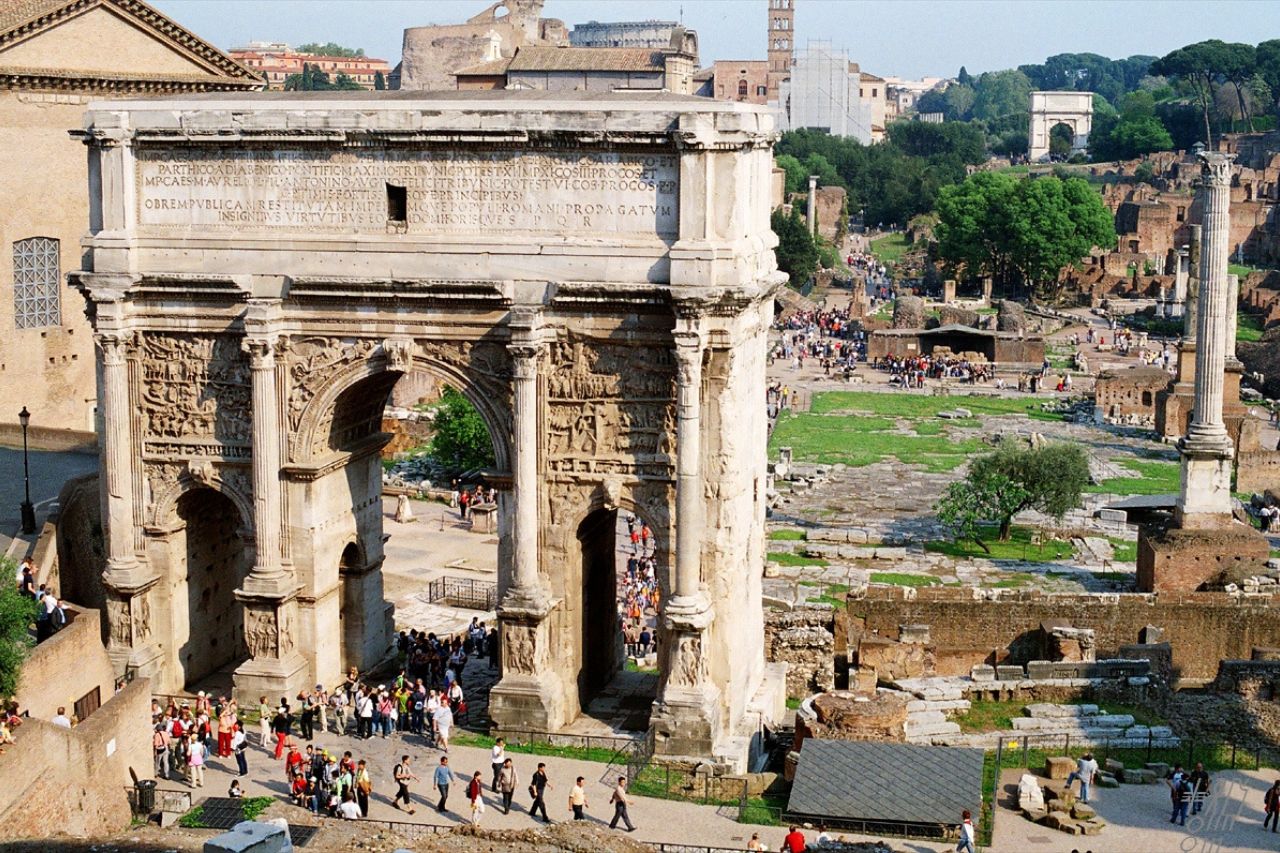
The Arch of Septimius Severus in Rome was completed in 203 CE. It was commissioned by Septimius Severus in celebration of his recent victories over the Parthians in modern-day Iran. There, Septimius Severus’ army conquered the city of Ctesiphon in 197 CE, and created the new Roman province of Mesopotamia in 199 CE. It is one of many Ancient Roman sites you can visit in the city.
Who Built the Arch of Septimius Severus
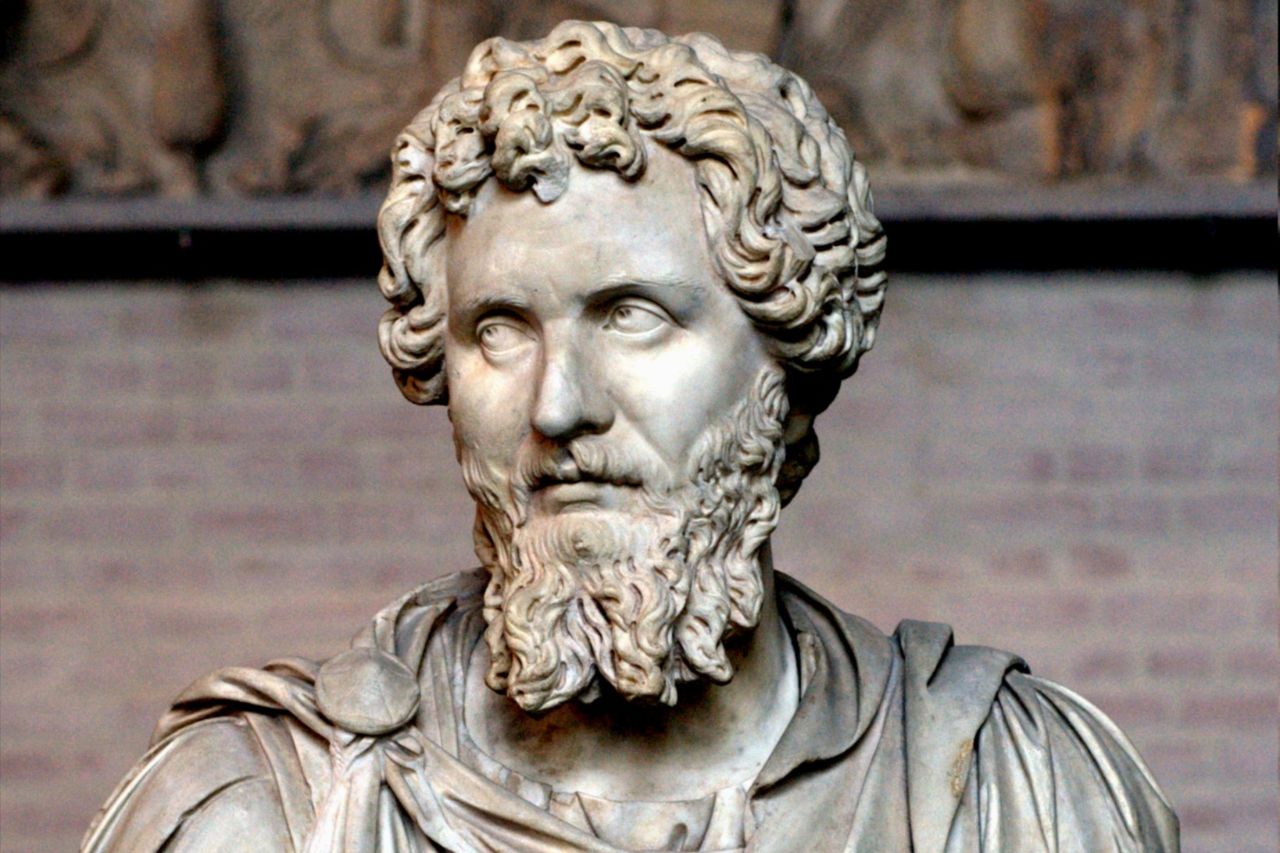
Though the Arch of Septimius Severus was commissioned in Rome by Emperor Septimus Severus, its architect is unknown. Some scholars believe that subtle differences of style indicate that a variety of different workshops and sculptors worked together – which would have allowed the building to be completed more quickly.
The core and foundations of the arch are crafted of travertine mixed with concrete and brick, and the exterior facade and eight composite columns are made of Proconnesian marble, as is typical of Antonine style. The design features three separate arches, common to triumph arches of the period. Street traffic flowed through the central arch and the two were usable by pedestrians.
The facade of the Arch is designed to imitate a style called tetrastyle, in which four columns create a porch. In reality, the arch does not have a porch, it is only an illusion.
Read more: Capitoline Hill – 12 Things You Must See Here
Why Was the Arch Built?
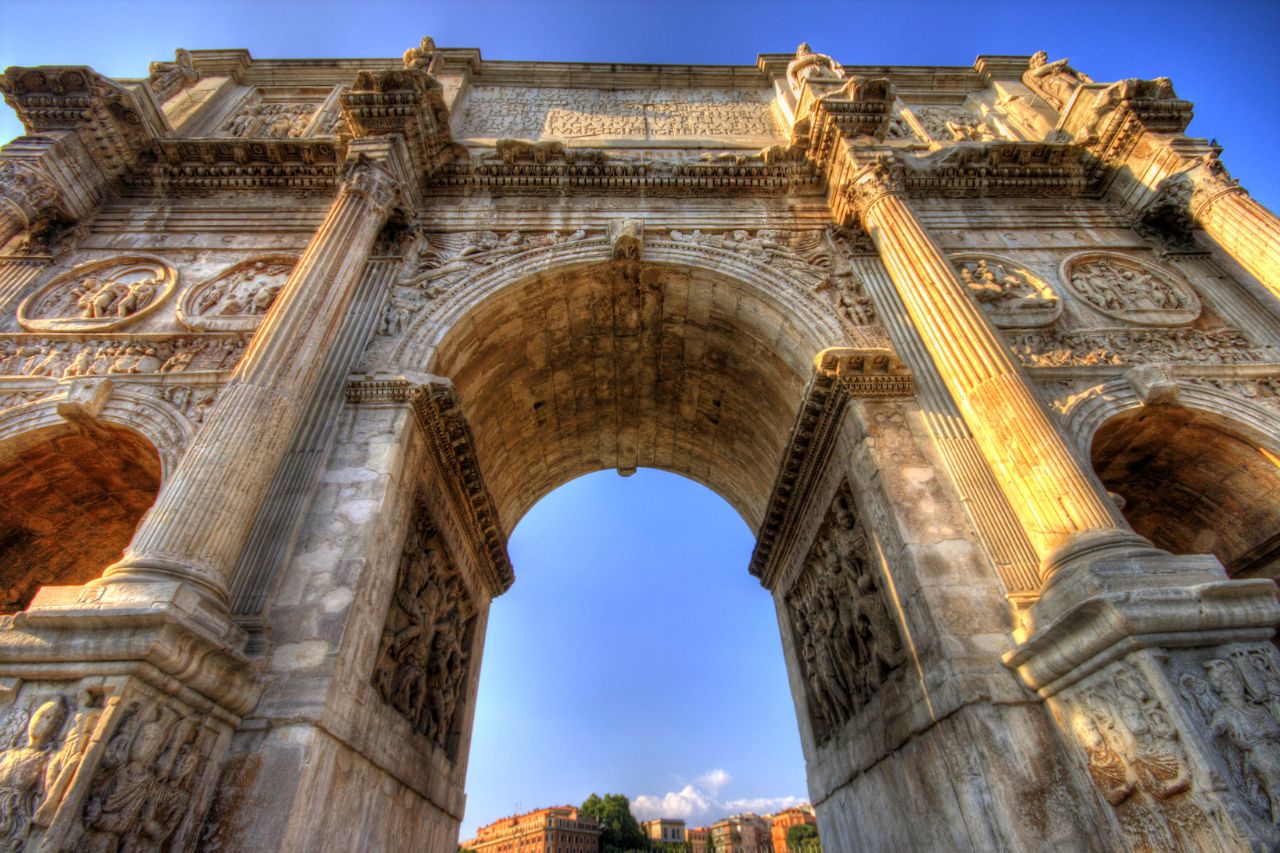
The origin of the Arch of Septimius Severus was, naturally, the emperor Septimius Severus, who commissioned the arch following his and his sons’ victories over the Parthians.
Creating an arch to commemorate a victory was common in the Roman world during the second century CE. After the completion of the arch, its image was etched onto currency coins, so that Romans everywhere could see it.
Specific motifs and inscriptions were included to portray and convey the empire’s power.
Motifs on the Arch of Septimius Severus
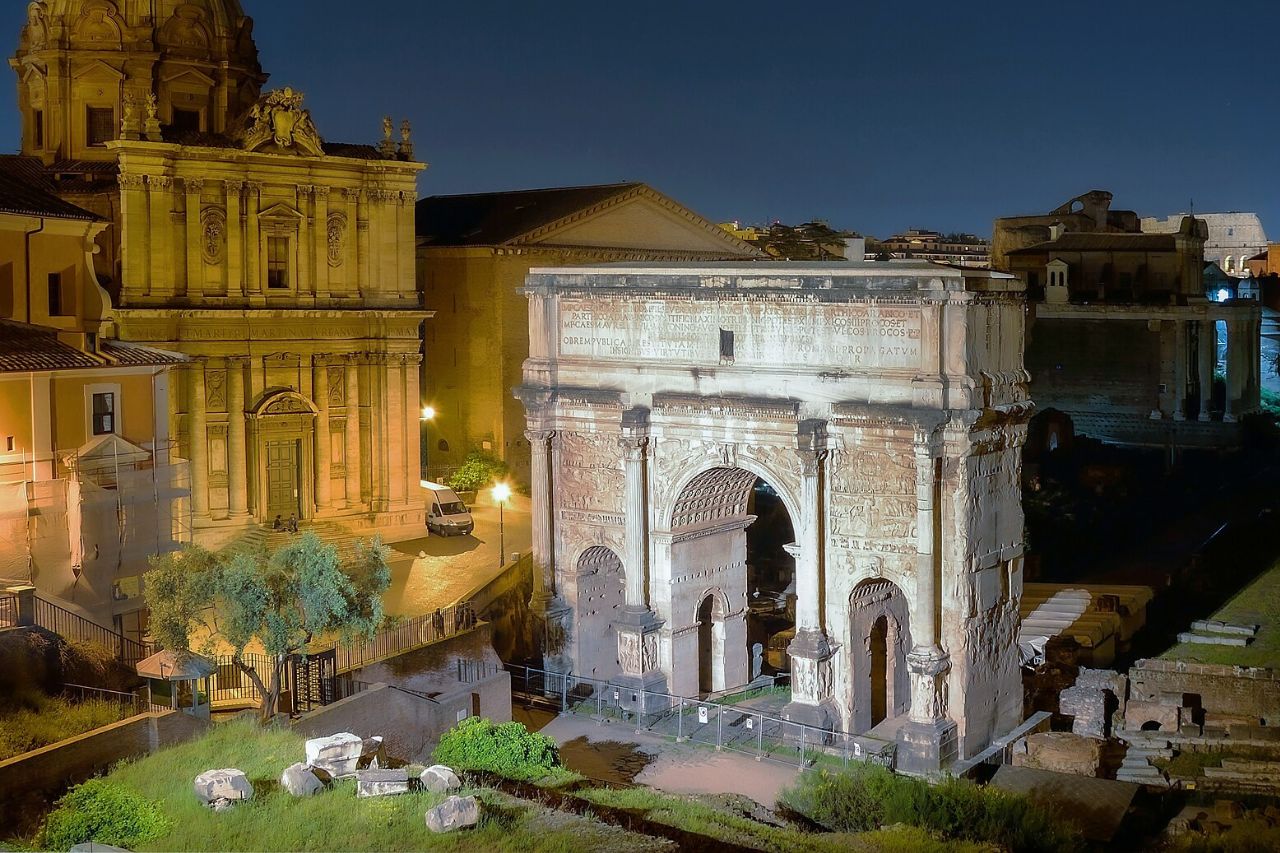
Four reliefs represent four heroic stories: the siege of Nisibis from 195 AD in the first Parthian war, Romans attacking Seleucia in the second Parthian campaign, and the Romans taking over the city of Ctesiphon, which was the final battle of the Parthian war. The other panel has a few interpretations, some scholars believe that it depicts the revolt of Roman ally Edessa while others think it shows the emperor Severus and the city of Hatra.
The topmost part of the arch, the attic, was decorated to show the achievements of Septimius Severus and his family. On the pedestals, there are carved depictions of prisoners of war, full of despair and at the hands of Roman soldiers. Elsewhere, you can see the treasures taken during conquests. It is no longer visible, but evidence from ancient coins indicate that there used to be a chariot pulled by six horses, which likely served as trophy-bearers. Writing giving thanks to the emperors for “restoring the Republic and expanding the dominion of the Roman people.”
Explore More Roman Art: Statues in Rome – 23 Must-see Pieces in the Eternal City
Where is the Arch and How to Get There
While you’re in Rome, a trip to the Roman Forum, home of the Arch of Septimius Severus, is essential! It can be found at the northwestern end of the forum, near the Chiesa Santi Luca e Martina Martiri.
You can get there by foot or by bus. The closest bus stop is called Fori Imperiali and the closest metro stop is Colosseo, about 20mins away by foot.
Visit the Arch of Septimius Severus

A visit to the Arch of Septimius Severus is included in a ticket to visit the Roman Forum. Tickets are available for purchase 30 days ahead of time.
The open hours of the Roman Forum vary throughout the year, but it always opens at 9 am. The closer to 9 am you arrive, the easier it will be to avoid crowds and tour bus visits.
Like all Italian museums, entry is free to the Roman Forum on the first Sunday of each month – but the crowds are likely to follow suit. (Likewise, if you aren’t interested in the free ticket and want to miss the extra crowd, avoid popular museums on the first Sunday of the month!)
Read More: Best Hotels in Trastevere, Rome – The 15 Coolest Stays
FAQs About The Arch of Septimius Severus
The more you know, the more there is to take in when visiting an ancient site! Here are our answers to some common questions that might come up while planning your visit.
What happened to the Arch of Septimius Severus?
The Arch was never destroyed. One side was harmed in a fire and it has been affected by erosion, but it is still standing today.
What was the Arch of Septimius Severus propaganda for?
The Roman Arch of Septimius Severus served as propaganda to represent the power and might of the Roman Empire’s conquest.
What is Septimius Severus famous for?
Septimius Severus was the first African-born Roman Emperor. He defeated three other claims to the title of emperor after the death of the emperor Pertinax. During the aptly named “Year of the Five Emperors” – Didius Julianus, Pescennius Niger and Clodius Albinus. His victories against the Parthians are commemorated on the Arch of Septimius Severus in the Roman Forum archeological site.
Featured Image Credits: A. Hunter Wright, CC BY-SA 3.0, via Wikimedia Commons


